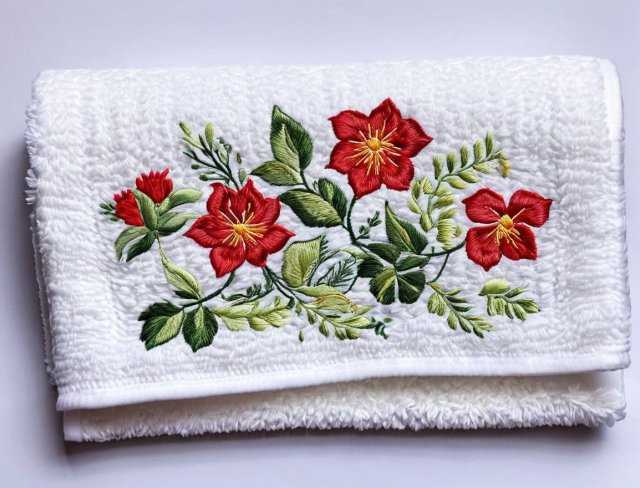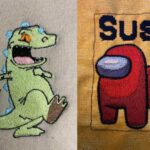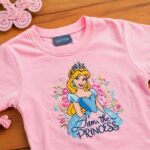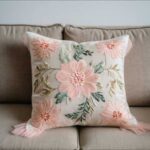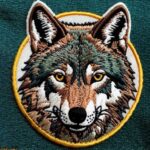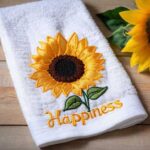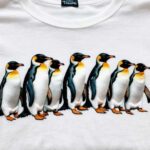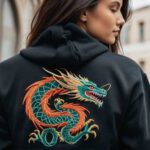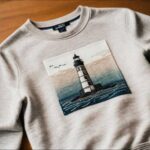Quality Matters
Selecting The Right Caliber of Fabric For Towel Embroidery
Introduction
Embroidery on towels is not just about adding decorative flair; it’s a meticulous art form that hinges on the careful selection of fabric. The fabric chosen serves as the very foundation upon which the embroidered design rests, influencing everything from the clarity of stitches to the longevity of the final product.
In this comprehensive guide to towel embroidery, we’ve explored the intricate interplay between fabric selection and embroidery techniques, emphasizing the importance of understanding the unique qualities of each fabric type. From the smooth texture of cotton to the quick drying properties of microfiber, every fabric offers its own set of advantages and considerations, shaping the outcome of the embroidery in profound ways.
Navigating the world of towel embroidery requires more than just stitching skills; it demands a deep understanding of fabric characteristics, absorbency levels, and durability. By delving into the nuances of fabric selection, embroiderers can elevate their craft and create personalized towels that not only dazzle the eye but also withstand the test of time. Join us as we unravel the secrets of towel embroidery, from selecting the ideal fabric to enhancing your stitching techniques, and embark on a journey of creativity and craftsmanship that transcends mere utility to become a cherished form of artistry.
Understanding Towel Embroidery
Embroidering on towels is a delicate art form that requires a deep understanding of both the embroidery process and the characteristics of different towel fabrics. At its essence, towel embroidery involves embellishing towels with decorative designs, patterns, or text using specialized embroidery machines or hand stitching techniques. Each stitch is carefully placed to create a cohesive and visually appealing design that enhances the functionality and aesthetic appeal of the towel.
One of the key aspects of understanding towel embroidery is recognizing the importance of fabric selection. The fabric serves as the canvas for the embroidery, dictating how the stitches will interact with the material and ultimately influence the final appearance of the design. Factors such as thread count, fabric texture, absorbency, and durability all play a significant role in determining which fabric is best suited for a particular embroidery project.
For instance, towels with a higher thread count generally provide a smoother surface for embroidery, allowing stitches to stand out more vibrantly and with greater detail. Fabrics with a tight weave are also preferred, as they offer a stable foundation for intricate stitching and help prevent distortion of the design. Additionally, the texture of the fabric can greatly impact the overall aesthetic of the embroidery. Smooth fabrics showcase intricate designs beautifully, while textured fabrics add depth and dimension to the finished product.

Absorbency is another crucial consideration when selecting fabric for towel embroidery. While highly absorbent towels are desirable for their practical use in drying, they may pose challenges during the embroidery process. Towels with high absorbency tend to shrink and distort when subjected to the heat and tension of embroidery machines. To mitigate this issue, stabilizers are often used to reinforce the fabric and prevent puckering or stretching of the design.
Durability is also a key factor to consider, especially for towels that will undergo frequent washing and use. Choosing fabrics that can withstand repeated laundering without fading, fraying, or losing their shape ensures that the embroidery remains intact and looking pristine for years to come.
In essence, understanding towel embroidery involves more than just knowing how to stitch a design onto a towel. It requires a comprehensive understanding of the properties of different towel fabrics and how they interact with embroidery techniques. By mastering the art of fabric selection and embroidery, artisans can create personalized towels that not only serve their practical purpose but also serve as beautiful works of art.
Selecting the Ideal Fabric
Choosing the right fabric for towel embroidery is a critical step in ensuring the success of your project. Each fabric type offers unique characteristics that can significantly impact the outcome of the embroidery process and the final appearance of the design. One of the most popular choices for towel embroidery is cotton, renowned for its durability, absorbency, and versatility. Cotton towels provide an excellent surface for embroidery due to their smooth texture and ability to hold stitches securely. Within the realm of cotton towels, terry cloth stands out as a preferred option for embroidery, thanks to its looped pile construction that creates a soft and plush surface ideal for showcasing intricate designs.
In addition to cotton, microfiber towels have gained popularity among embroiderers for their quick drying properties and silky smooth texture. Microfiber towels offer a sleek surface that allows embroidery stitches to stand out vibrantly, making them an excellent choice for towels that require both functionality and aesthetic appeal. Moreover, microfiber towels are lightweight and durable, making them suitable for a wide range of embroidery projects, from sports towels to travel towels.
When selecting the ideal fabric for towel embroidery, it’s essential to consider factors such as thread count, absorbency, texture, and durability. Fabrics with a higher thread count generally provide a smoother surface for embroidery, allowing stitches to glide effortlessly and stand out prominently against the backdrop of the towel. Additionally, towels with high absorbency are preferred for their practicality in everyday use, but may require additional stabilization during embroidery to prevent distortion or puckering of the design.
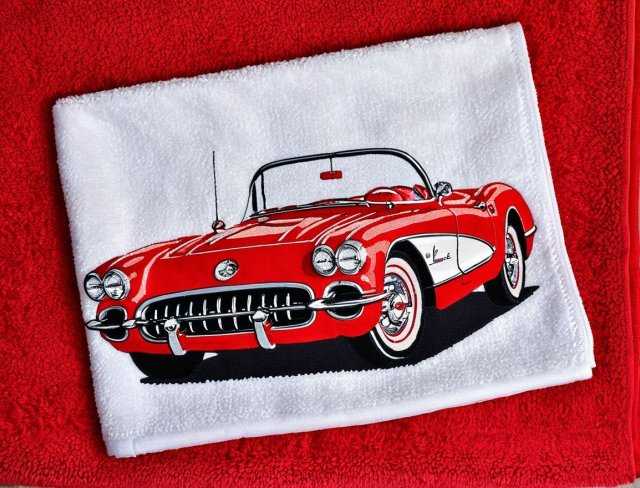
Texture plays a significant role in the overall aesthetic of the embroidery. Smooth fabrics showcase intricate designs beautifully, while textured fabrics add depth and dimension to the finished product. Depending on the desired look and feel of the embroidered towel, embroiderers can choose fabrics with varying textures to achieve the desired effect.
Durability is another crucial factor to consider when selecting fabric for towel embroidery, especially for towels that will undergo frequent washing and use. Choosing fabrics that can withstand the rigors of laundering without fading, fraying, or losing their shape ensures that the embroidery remains intact and looking pristine for years to come.
Selecting the ideal fabric for towel embroidery requires careful consideration of various factors, including fabric type, thread count, absorbency, texture, and durability. By choosing high quality fabrics that complement the intended design and embroidery technique, embroiderers can create personalized towels that not only look beautiful but also stand the test of time.
Factors to Consider
Several factors come into play when selecting fabric for towel embroidery. The first consideration is thread count, which refers to the number of threads per square inch of fabric. Fabrics with a higher thread count generally provide a smoother surface for embroidery, allowing stitches to stand out vibrantly and creating a more refined finished product. Additionally, fabrics with a higher thread count tend to be more durable and less prone to fraying, making them ideal for intricate embroidery designs.
Another important factor to consider is absorbency. Towels with high absorbency are desirable for their practical use in drying, but they may pose challenges during the embroidery process. Highly absorbent towels tend to shrink and distort when exposed to the heat and tension of embroidery machines. To mitigate this issue, stabilizers are often used to reinforce the fabric and prevent puckering or stretching of the design. Additionally, towels with lower absorbency may require less stabilization during embroidery, resulting in a smoother and more consistent stitching experience.
1. Thread Count: In towel embroidery, thread count, referring to the number of threads per square inch of fabric, significantly influences the quality of the finished product. Fabrics with a higher thread count offer a smoother surface, allowing stitches to stand out vibrantly and providing a stable foundation for intricate designs. This tight weave enhances durability, preventing fraying or unraveling, and ensures that the embroidery remains intact after multiple washes. By selecting fabrics with a higher thread count, embroiderers can create stunning personalized towels that maintain their beauty over time.
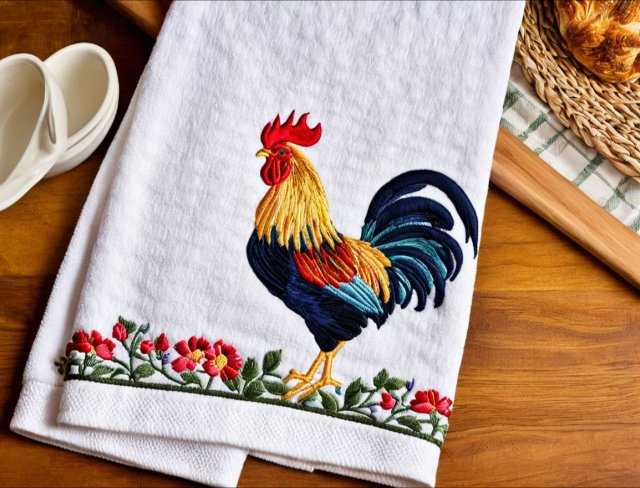
2. Absorbency: Absorbency plays a crucial role in towel embroidery, as it determines how well the fabric can absorb moisture and maintain its integrity. Towels with high absorbency are ideal for everyday use, as they quickly and effectively soak up water, making them practical for drying purposes. However, when it comes to embroidery, highly absorbent towels may present challenges. The moisture absorbing properties of these towels can cause them to shrink and distort under the heat and tension of embroidery machines, leading to puckering or stretching of the design.
To mitigate this issue, additional stabilization techniques, such as using embroidery stabilizers or hooping the fabric more securely, may be necessary to ensure that the embroidery remains smooth and consistent. Despite these challenges, embroidering on towels with high absorbency can yield beautiful results, as long as proper stabilization techniques are employed to maintain the integrity of the design.
3. Texture: The texture of the fabric plays a pivotal role in the outcome of towel embroidery, significantly influencing the overall appearance of the design. Smooth fabrics provide a sleek surface for embroidery stitches to glide effortlessly, resulting in crisp and well defined designs. This smooth texture is particularly advantageous for showcasing intricate embroidery patterns and delicate details, as it allows the stitches to stand out prominently against the backdrop of the fabric.
On the other hand, textured fabrics add depth and dimension to the embroidery, enhancing the visual interest and tactile appeal of the finished product. The subtle variations in texture create a dynamic interplay of light and shadow, giving the embroidery a sense of depth and richness. Whether opting for a smooth or textured fabric, embroiderers can leverage the unique qualities of each to achieve their desired aesthetic and create personalized towels that captivate the senses.
4. Durability: When selecting fabric for towel embroidery, durability is paramount to ensure that the finished product maintains its quality and appearance over time, even with frequent use and laundering. Choosing fabrics that can withstand the rigors of daily life is essential for creating long lasting embroidered towels that retain their beauty and functionality. Fabrics with high durability are less prone to fading, fraying, or losing their shape after multiple washes, ensuring that the embroidery remains intact and vibrant.
By prioritizing durability, embroiderers can confidently select fabrics that stand the test of time, providing years of enjoyment and utility for the end user. Additionally, opting for durable fabrics also reflects a commitment to sustainability, as it reduces the need for frequent replacements and contributes to a more eco friendly approach to textile consumption.
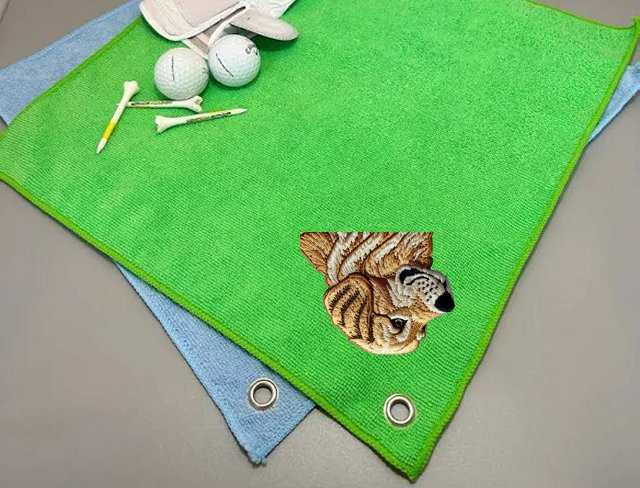
Impact of Quality on Embroidery
The quality of the fabric chosen for embroidery has a profound impact on the outcome of the embroidery process and the overall aesthetic appeal of the finished product. Inferior fabrics can compromise the integrity of the embroidery, leading to issues such as uneven stitching, fraying, or distortion of the design.
Conversely, investing in high quality fabric ensures that the embroidery maintains its integrity and beauty, even after repeated use and laundering. High quality fabrics provide a stable foundation for the embroidery stitches, allowing them to glide smoothly and securely onto the fabric surface. This results in crisp, well defined designs that stand out vibrantly against the backdrop of the fabric.
Moreover, the choice of fabric directly influences the longevity of the embroidery. Fabrics of inferior quality are more prone to fading, shrinking, or losing their shape over time, diminishing the overall appearance of the embroidery. On the other hand, high quality fabrics are engineered to withstand the rigors of daily use and laundering, ensuring that the embroidery remains intact and looking pristine for years to come. This longevity is especially crucial for items such as towels, which are subjected to frequent washing and handling.
The impact of quality on embroidery extends beyond just the visual aspect. High quality fabrics provide a superior tactile experience, with a luxurious feel and texture that enhances the overall enjoyment of the embroidered item. Whether it’s a soft, plush towel or a silky smooth garment, the quality of the fabric adds an extra layer of comfort and refinement to the embroidery, elevating it from a simple embellishment to a cherished piece of functional art.
In essence, the impact of quality on embroidery cannot be overstated. By selecting high quality fabrics, embroiderers can ensure that their creations not only look beautiful but also stand the test of time, providing lasting enjoyment and satisfaction for both the creator and the end user.
Enhancing Your Craft
Elevating one’s skills in towel embroidery involves a combination of experimentation, practice, and attention to detail. Embarking on this journey requires an open minded approach to exploring different fabric types, thread combinations, and embroidery techniques. By experimenting with various fabrics, from traditional cotton to innovative microfiber, embroiderers can gain valuable insights into how each material behaves during the stitching process. This hands on experience allows artisans to understand the unique characteristics of each fabric, such as its texture, absorbency, and stability, and how these qualities impact the overall embroidery outcome.
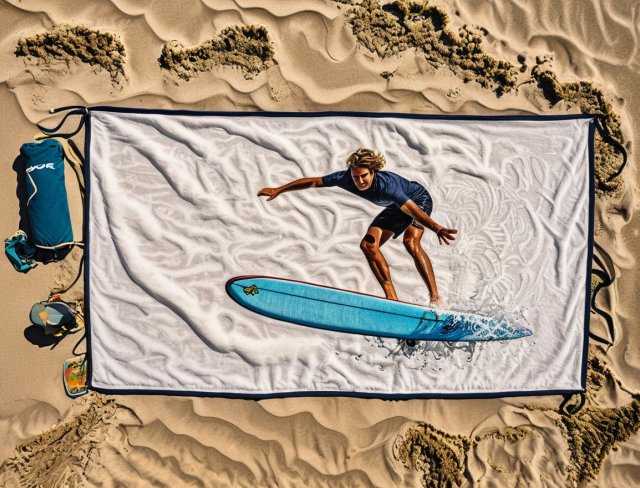
Practice is another essential component of enhancing one’s craft in towel embroidery. Dedicate time to honing your stitching techniques on scrap fabric, experimenting with different stitch lengths, densities, and styles. This deliberate practice not only improves your embroidery skills but also builds confidence and intuition when working on larger, more intricate projects. Additionally, exploring different thread combinations, from traditional cotton threads to metallic or variegated threads, can add visual interest and depth to your embroidery designs, allowing you to unleash your creativity and express your unique artistic vision.
Incorporating embroidery stabilizers into your workflow is another valuable technique for enhancing your craft. Stabilizers provide support and reinforcement to the fabric during the embroidery process, preventing stretching, distortion, or puckering of the design. Experiment with different types of stabilizers, such as tear away, cut away, or water soluble stabilizers, to find the most suitable option for your specific embroidery project. By mastering the art of stabilizing your fabric, you can achieve smoother, more consistent embroidery results and tackle a wider range of embroidery projects with confidence.
Progressive education and learning are essential for continuous improvement in towel embroidery. Stay informed about the latest trends, techniques, and tools in the embroidery industry by attending workshops, joining online communities, or enrolling in embroidery classes. Collaborating with fellow embroiderers and seeking feedback on your work can provide valuable insights and inspiration for pushing the boundaries of your craft. Remember that mastery in towel embroidery is a journey, not a destination, and each project offers an opportunity for growth, learning, and creative expression.
Exploring Different Types of Towels
Embroidery on towels offers a versatile canvas for creative expression, with a wide range of towel types to choose from, each requiring its own unique fabric for optimal results. From the plush comfort of bath towels to the practicality of kitchen towels and the portability of travel towels, there’s a towel for every occasion and purpose.
Understanding the specific characteristics of each towel type is essential for selecting the ideal fabric that not only complements the embroidery design but also enhances the functionality and aesthetic appeal of the finished product. By considering factors such as absorbency, durability, and texture, embroiderers can tailor their fabric selection to suit the intended use and desired outcome of the embroidered towel, ensuring that each stitch shines on its chosen canvas.
• Golf Towels: Golf towels are essential accessories for golfers, used to wipe down clubs, hands, and golf balls during a round. They need to be durable to withstand outdoor conditions and quick drying to ensure they stay fresh throughout the game. Microfiber towels are a popular choice for golfers due to their ability to absorb moisture quickly and their resistance to odors and bacteria. Cotton towels are also favored for their softness and durability, providing a reliable option for golfers looking for a classic towel option on the course.
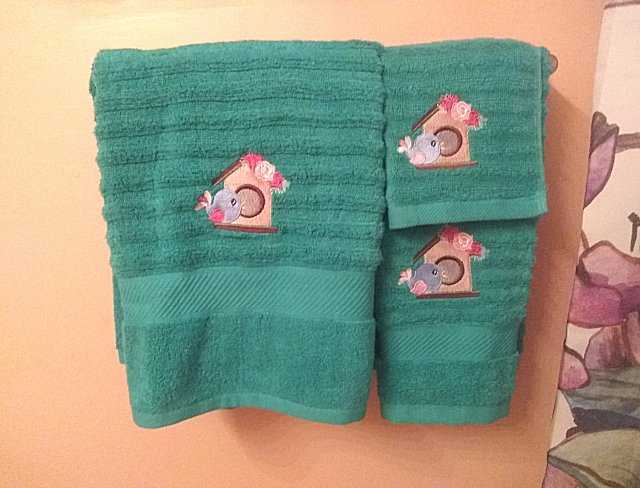
• Kitchen Towels: Kitchen towels, also known as tea towels or dish towels, are versatile tools used for drying dishes, wiping down surfaces, and handling hot pots and pans. They need to be highly absorbent to soak up spills effectively and durable enough to withstand frequent use and laundering. Cotton and linen blends are ideal fabrics for kitchen towels, offering both absorbency and durability. Cotton towels are soft, absorbent, and easy to clean, while linen towels are known for their strength and ability to dry quickly, making them perfect for busy kitchen environments.
• Bath Towels: Bath towels are essential for drying off after a shower or bath, providing comfort and warmth while also adding a touch of luxury to the bathroom. They need to be soft, absorbent, and durable to withstand daily use and frequent washing. Egyptian and Turkish cotton are considered the gold standard for bath towels due to their superior softness, absorbency, and durability. These high quality cottons produce towels with a plush, luxurious feel that envelops the body in warmth and comfort, creating a spa like experience at home.
• Bathroom Display Towels: Bathroom display towels are decorative towels used to enhance the aesthetic appeal of the bathroom, often displayed on towel racks or shelves for visual interest. They need to be lightweight and finely woven to showcase intricate embroidery designs effectively. Fabrics such as linen or cotton blends are preferred for their smooth texture and ability to hold embroidery stitches securely. These towels add a touch of elegance to the bathroom décor, creating a cohesive and inviting atmosphere for guests.
• Hand Towels: Hand towels are essential for drying hands in bathrooms and kitchens, providing a convenient and hygienic way to maintain cleanliness. They need to be lightweight, absorbent, and durable to withstand frequent use and washing. Cotton or linen blends are ideal fabrics for hand towels, offering a perfect balance of softness, absorbency, and durability. These towels come in a variety of colors and patterns, allowing homeowners to add a decorative touch to their bathrooms or kitchens while also ensuring functionality.
• Beach Towels: Beach towels are larger and thicker than standard towels, designed to provide comfort and absorbency for beachgoers. They need to be highly absorbent to dry off wet skin and sand quickly, while also being comfortable to lounge on at the beach. Terry cloth and velour are popular fabrics for beach towels, offering both absorbency and softness. These towels come in vibrant colors and fun patterns, making them a stylish accessory for beach outings and pool days.
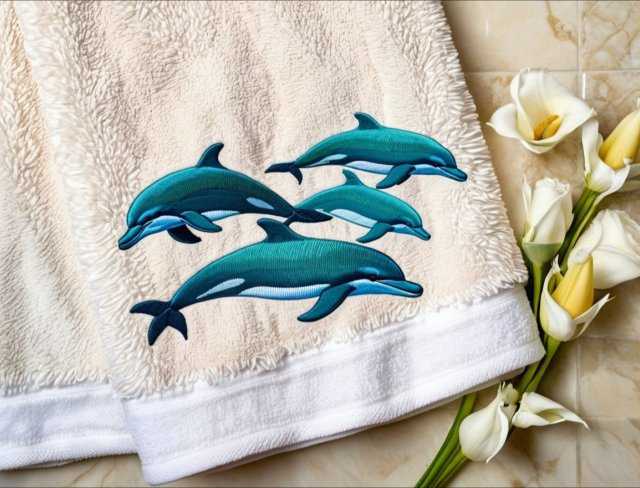
• Sports Towels: Sports towels are designed for athletes to stay dry and comfortable during workouts or games, providing a quick and convenient way to wipe away sweat and moisture. They need to be lightweight, quick drying, and durable to withstand intense physical activity. Microfiber towels are an excellent choice for sports towels due to their ability to absorb moisture quickly and their lightweight, compact design. These towels are often designed with features such as mesh panels or zippered pockets for added functionality, making them a must have accessory for athletes on the go.
• Travel Towels: Travel towels are compact and portable towels designed for travelers who need a lightweight and space saving option for their adventures. They need to be durable, quick drying, and odor resistant to withstand the rigors of travel. Microfiber towels are the preferred choice for travel towels due to their lightweight, compact design and ability to absorb moisture quickly. These towels come in a variety of sizes and styles, from small hand towels to large beach towels, making them versatile enough to use for any travel adventure.
• Spa Towels: Spa towels are crafted for luxury and relaxation, providing a soft and absorbent surface for spa treatments such as massages, facials, and body wraps. They need to be made from premium materials that are soft, plush, and highly absorbent to enhance the spa experience for clients. Egyptian cotton and bamboo are the preferred fabrics for spa towels, offering unparalleled softness and absorbency. These high quality materials create a luxurious feel that envelops the body in comfort, making the spa experience truly indulgent and rejuvenating.
With this comprehensive understanding of the various towel types and their ideal fabrics, embroiderers can confidently select the perfect canvas for their next embroidery project, ensuring stunning results that exceed expectations. By recognizing the specific characteristics and requirements of each towel type, embroiderers can make informed decisions when choosing fabrics that complement their designs and meet the functional needs of the intended application.
It’s important to note that while this list covers common towel types, there may be other specialty towels not included here, each with its own unique fabric considerations. However, armed with knowledge about absorbency, durability, texture, and other factors, embroiderers can navigate the diverse landscape of towel options with ease, ensuring that every stitch shines on its chosen canvas, whether it’s for personal use, gifting, or commercial applications.
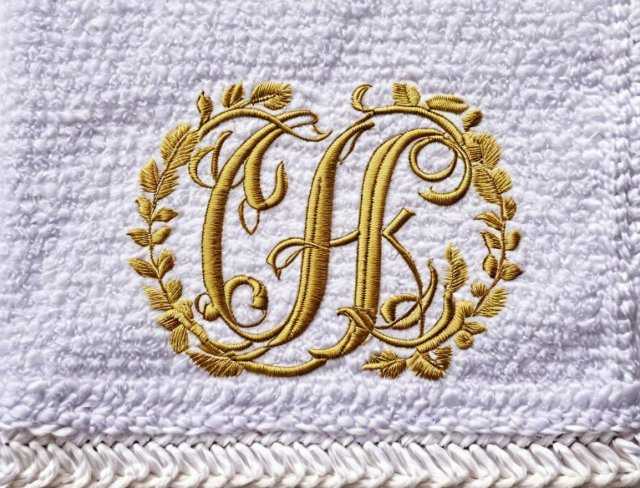
Conclusion
In the realm of towel embroidery, every stitch tells a story, and the fabric you choose sets the stage for a masterpiece or mediocrity. Through meticulous attention to fabric selection and embroidery techniques, artisans can transform ordinary towels into exquisite works of functional art. Quality, as we’ve discovered, is not merely a buzzword but a guiding principle that ensures the longevity and beauty of embroidered creations. As you embark on your own towel embroidery projects, remember to choose wisely and let your creativity flourish in every stitch.
Embroidery on towels is a marriage of skill and artistry, where fabric becomes the canvas for intricate designs and personalized touches. By mastering the art of fabric selection and embroidery techniques, you can create towels that not only serve their practical purpose but also delight the senses and evoke emotion. Whether you’re a seasoned embroiderer or just starting out on your creative journey, may this guide inspire you to explore the boundless possibilities of towel embroidery and leave a lasting impression with every stitch.
Now that you have read through this article, feel free to SHOP for products we have created. If you are looking for something special which isn’t in our store, feel free to contact us.

